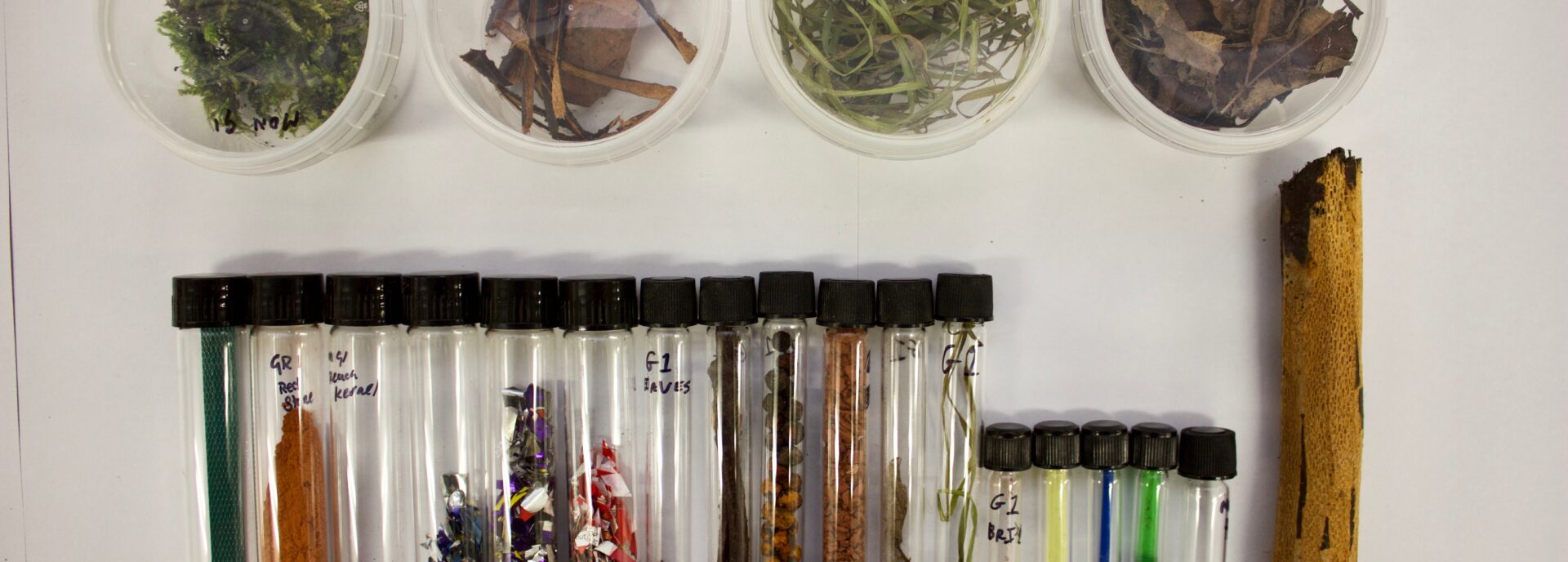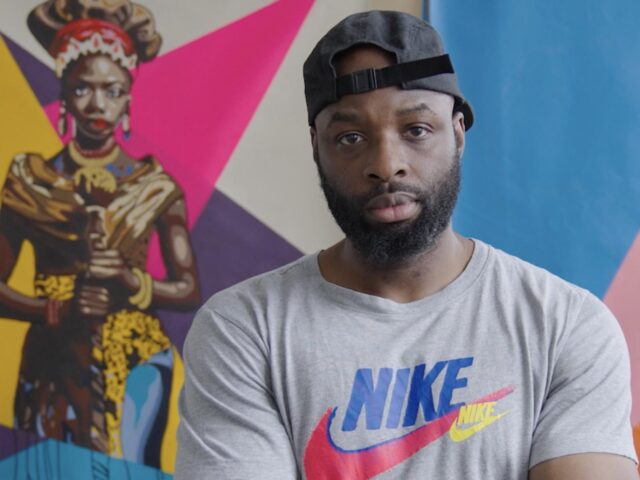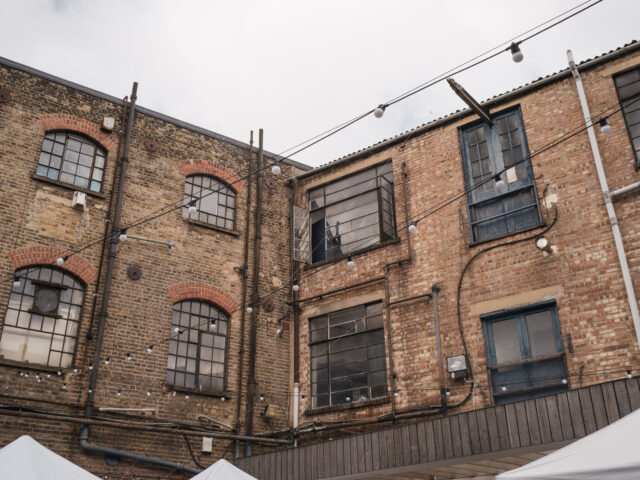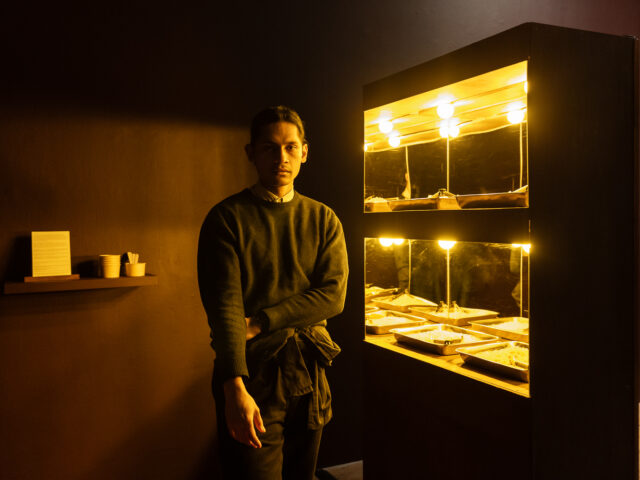Dunya Kalantery & the Creative Knowledge Project
Dunya Kalantery is artist-in-residence at Thamesmead’s Lakeside Centre. Her residency is part of the Creative Knowledge Project, which looks to question what a library can be in the 21st century ahead of the new Thamesmead Library being built on Southmere Lake. I spoke to Dunya to find out more about her artistic practice, the residency itself, how her plans have changed due to Covid-19, and to learn more about The Missing Pieces to Society podcast, a four-part radio show produced by Dunya and the Creative Researchers – a group of nine young people from Thamesmead.
Hi Dunya, it’d be great if you could give us a quick intro to yourself and what you do, and then tell us why you were originally interested in applying for the Creative Knowledge Project Residency programme?
I was born and raised in North East London (Hackney and later Haringey), when my parents had recently migrated to the UK – my father from Iran, my mother from Croatia. In many ways I’m a nomad who is always looking for ways of building home – through the relationships I build and the projects I work on.
I mostly work collaboratively with children and young people from migrant or working-class backgrounds. I facilitate them to tell stories that bring together their local area, their culture, and their imagination – with the aim of improving their relationship with their environments, as well as their own self-image.
My work is really motivated by my own background, the multiple generations of displacement that come before me, and my understanding of how hard it can be to feel a sense of belonging in a city that is constantly changing, attempting to push you out, within a politics that sets out to alienate you. I really believe in the utopian potential of storytelling, and I have a deep love for London. So, I suppose I work to tell collective stories that make London love us back.
I spent 4 years working in Tottenham on several different projects, with a framework of community health – thinking and working through ways in which individual wellbeing is linked to the health of community and the urban environment. The Creative Knowledge Project Residency programme excited me as a way of developing my practice working with a new community, around the opening of a new library – working directly on ideas of how public space and access to knowledge can support community health. I was also keen to understand how the scale of redevelopment happening in Thamesmead was affecting the existing community in a very different part of the city to where I was used to working.
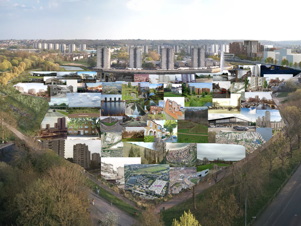
Image courtesy Mohammed Chowdhury
You’ve been living in Thamesmead for over a year now as part of the project, how have you found it? Can you name three things that make Thamesmead unique?
The first time I visited Thamesmead I was really struck by its beauty. In comparison to East London there’s so much sky, and the marshes and the water can make it a really magical place. After a while I also came to see its difficulties – it can be a very isolating place, without many opportunities to cross paths with people. And not just in Lockdown! But it’s amazing to see how people’s commitment to community means they work their way around some pretty difficult architecture.
I’d say three things that make Thamesmead unique is its relationship to water and encounters with horses. I read somewhere that Thamesmead was built “in the Venetian style” which tickles me. The marshland that it’s built on is managed through a system of lakes and waterways which make for an amazing relationship between concrete and the forces of nature.
On one trip I took with a group of eight-year-olds, we were hunting for treasure on a public footpath, by a stream, behind an industrial estate. Suddenly this vision of a white horse started walking towards us. We had to make our way out pretty quickly getting stuck in the mud along the way! If you’re lucky you can regularly catch sight of a couple of men from the travellers’ community pegging it round the roundabout on a horse and trap.
Your residency was initially scheduled to run for one year from November 2019, but due to the Covid-19 pandemic the project was extended. How did the pandemic affect your original plans? What changes has this made to you experience, for instance has it given you more time to reflect?
When the pandemic hit, I had just built enough relationships to start making my plans work – so a lot of planned activity was cancelled by the initial lockdown, and a lot of progress felt cancelled too. I need collaboration to work so I was obviously stumped! But in a crazy way I was also relieved. Building relationships in the winter in Thamesmead had been hard and I was throwing all my body behind trying to make them work, feeling a bit like a desperate kid in the playground who is actually glad when the party is cancelled. When everything was cancelled, I realised I had a stream of plans and projects in the mix but probably not enough time to breathe.
At first, I tried to run a digital project that fell totally on its face and taught me that you can’t just throw things out into the digital ether and expect to get a return. And eventually I got things off the ground by focussing on building a strong set of relationships with a small group of young people, who I was able to pay for their commitment and their work, and this turned out to be an amazing source of inspiration, relationships and content. I realised that a much closer focus benefits my work a lot – as does taking the pressure off myself to be constantly producing outcomes. Hopefully I’ve learnt to trust the space that’s needed for process more too! I think the feeling that getting anything to succeed in the pandemic is a massive success has been really healthy.

Image courtesy Rima & McRae
For those who haven’t already listened to The Missing Pieces to Society podcast, can you tell us what it’s about, who’s involved and how it started?
The Missing Pieces to Society is a podcast about contemporary identity produced by a group of nine 17-19 year olds from Thamesmead – the Creative Researchers – who I worked with from September 2020 – January 21, meeting weekly over Zoom. It covers the topics of double standards, discrimination, life skills and men’s health with amazing tenderness and insight; talking about the importance of friendship, what causes insecurity, men who wear suits and a lot more. The group who produced it are Julia Huynh, Michelle Ndlovu, Sarah Hocine, Maruf Chowdhury, Bianka Woode, Janice Aribisala, Daniel Kamere, Thelma Obirai and Sibo Ngile; with the help of RTM producer Niks Delanancy and myself.
The podcast is the outcome of a creative research process on public space, care, and knowledge – in which I set the group a series of briefs, encouraging them to think and respond creatively to the space around them, the relationships they hold, and the intrinsic knowledge they have on their own lives and experiences. After two months of research and experimentation, I set the group a brief in November for them to produce a creative action that engaged with the issues that they felt were most important to them. They chose to produce a podcast where they could explore their ideas and have their voices heard. I approached Thamesmead’s amazing local radio station – RTM.fm – to broadcast it and they gave us a platform and loads of support.
Click here to listen to the podcasts.
You mention that the Creative Knowledge Research Project uses the principles of ‘Participation Action Research’, saying that those with lived experience “are not just incidental to the curiosity of the researcher but are the masters of inquiry into the underlying causes of the events in their world.” Can you tell us briefly what this approach means to you, and how it applies to the young people you’re working with?
That quote is written by Paolo Freire, who’s most famous work ‘Theatre of the Oppressed’ is about recognising that the tools of understanding, recognition, and social transformation are first and foremost in the hands of those who live through the societies in question.
The “research” aspects of Participation Action Research attempts to avoid extractive research practices in which the “experts” traditionally study community members under the microscope of their research goals, and observe as outsiders. I see the same extractive processes often happening with socially engaged practice – where the (often well meaning) artist comes in as “expert”, who makes a living out of, and builds value from, the lived experiences of those who they work with.
By using Participation Action Research I’m trying to move away from this, to share the creative process with the young people I work with, to place utmost value on their contributions and to place the authorship of their outcomes in their own hands. I have ensured that the young people I work with continue to be paid for their work and are duly credited. For me this is a very important part of attributing the value of knowledge to the people who produce it. I hope that this experience builds self-confidence in the young people I work with, encouraging them to recognise the value of the perspectives and relationships they hold and to take their lives and struggles into their own hands.
You’re also working with local applied arts organisation Rima & McRae and 120 primary school children on the project ‘The Brightness of Juju’. Did you come up with the story for this or was it a joint effort between you and the students – do you see yourself as their guide, or as a facilitator and observer of their ideas?
That’s a very nice question! I see myself as both a guide, as observer and responder to their ideas, and as facilitator to getting those ideas down. In general, I work in a dialogical way – creating structure in which ideas can be played out, reacting and responding to the children’s ideas, and then formulating their ideas and feeding structure back to them so that they can take the lead again.
In this case, I told them the initial story, and then used the imaginative framework of that story to take them on a journey (which was literally a series of walks in their local area) where they could use my story as a launchpad for their own wild imaginations and observations.
The story refers to a dystopian world where Thamesmead has been separated from the rest of London due to flooding. Is this a reference to climate change or consumerist culture? Or is it simply a tool to encourage the children to let go of reality and explore their imaginations?
I’m a big fan of dystopia as a place to recognise the beauty and strength of human capacity in the face of systems of destruction and control that we have little power over. The ‘dystopia’ of climate change, and the blind drive towards consumerism, is a real dystopia that we live in and that our children will inherit. I see stories like this as stories that draw the real in – rather than let go of it. By framing the real as fantasy, the stories hopefully lay the ground for the incredible, transformational power of imagination. This hopefully enables us to see the things we take for granted with more magic capacity, allowing us to perceive and tell different stories to the ones we are sold daily. This is something children are so able to do (and which is why I love working with them). As well as a dystopian world, the story of ‘The Brightness of JuJu’ is one of children’s innate, creative knowledge and their learning through collaboration and creativity.
Ursula Le Gwin tells it the best in the Carrier Bag Theory of Fiction:
“It is the story that makes the difference. It is the story that hid my humanity from me, the story the mammoth hunters told about bashing, thrusting, raping, killing, about the Hero. The wonderful, poisonous story of Botulism. The killer story.
It sometimes seems that the story is approaching its end. Lest there be no more telling of stories at all, some of us out here in the wild oats, amid the alien corn, think we’d better start telling another one, which maybe people can go on with when the old one’s finished. Maybe. The trouble is, we’ve all let ourselves become part of the killer story, and so we may get finished along with it. Hence it is with a certain feeling of urgency that I seek the nature, subject, words of the other story, the untold one, the life story.”

Image courtesy Rima & McRae
Where would you like the project to go next, and what legacy would you like you residency to leave?
In the coming year I will be working with Rima & McRae to turn the stories and poetry we gathered throughout the process of The Brightness of JuJu into a book, co-created by the children, which will be available in Thamesmead’s new library. I hope this creates an imaginative palimpsest for the children involved, so they can continue to see the everyday – and the relationship of the library to the outside world – through the magical eyes of the world we created.
I will also continue working with RTM.fm and 18 young people, who are being paid by Peabody. Together we will programme and produce a yearlong series of radio shows, which will lead to a live, youth-led programme of events in the new library in 2022. My dream is that from the summer, the work with RTM will happen in person, in their recording studio – giving young people a place to go, to be together, and to give them a sense of ownership in their local radio station. And that this sense of ownership will then be caught by the new library when it opens, with relationships between young people in Thamesmead, the library and the librarians being built through the production and delivery of the programme.
A big thank you to Dunya for answering all of our questions, and enlightening us on those aspects of her practice and the residency. You can find out more about the Creative Knowledge Project and Dunya’s programme here.
